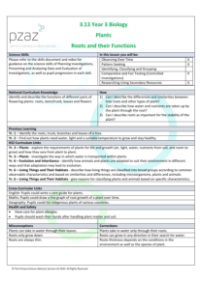Roots - Presentation

Science Resource Description
In a comprehensive presentation on plant biology, students are introduced to the fascinating world beneath the soil: the roots of plants. The session begins with a curiosity-sparking question about what roots look like and what their functions are. The educational journey delves into the specifics of root hairs, explaining that plants are self-sufficient in food production, using sunlight, carbon dioxide, and water. The presentation highlights how plants absorb water and minerals essential for their growth from the soil through a process called osmosis. It is the root hairs, the tiny tips of the roots, that play a crucial role in this absorption process, drawing in water which then travels through special tubes to be distributed throughout the plant.
The presentation also tells the story of the world's tallest trees, the majestic Sequoias, to illustrate the significance of roots in supporting and nourishing a plant. Through the anecdote of a family visiting a California forest, the guide explains that despite the towering height of these trees, their roots only go down about 20 feet. Instead, it is the vast spread of their root system, covering an area as large as one and a half football pitches, that anchors them firmly and allows them to absorb the astonishing amount of water and minerals they require. Additionally, the presentation includes a practical activity where students create their own 'Root Viewer' to observe root growth in different conditions. They will measure and record the growth, gaining hands-on experience with how environmental factors influence root development. Finally, through further investigations, students will explore how the thickness and number of roots affect water absorption, reinforcing their understanding of the critical role roots play in a plant's survival and health.






